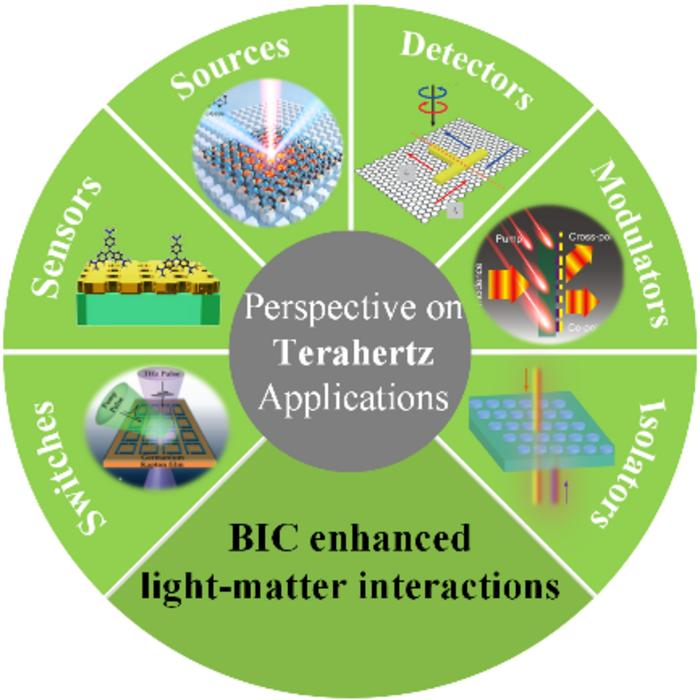In photonics, the interactions between light and matter are a central research focus. Resonant cavities with high-quality factors (Q) have the potential to confine light effectively and display ultra-long radiation lifetimes, thereby making them necessary for applications like lasers, nonlinear optics, modulators, and quantum computing.

Perspective of BICs on terahertz photonics. Image Credit: Ultrafast Science
Conventional methods for light confinement include microring resonators, photonic crystals, Bragg microcavities, and so on. Bound states in the continuum (BICs) are considered to be special nonradiative modes that subsist inside the radiation continuum, above the light line.
But their intrinsic optical fields could still be confined inside the structure in the absence of leaking into free space, thereby displaying an infinite radiative Q.
BICs offer a generalized method to obtain extremely high-Q resonant cavities, thereby providing a strong mechanism for improving light-matter interactions. During the past few decades, BICs have been fixed in several photonic structures, and the basic physical mechanisms have been explored greatly.
In recent years, abundant articles have reported several applications of BICs in different areas. Also, while there are numerous review articles on photonic BICs offering guidance and summarizing advances in recent years, the views of BICs in terahertz photonics were neglected.
In recent times, Professor Longqing Cong’s team at Southern University of Science and Technology published an online review article entitled “Recent advances and perspective of photonic bound states in the continuum” in the journal Ultrafast Science.
This article offers a view of BICs on applications in terahertz photonics after summarizing the most recent outcomes and interesting applications of photonic BICs. This will update the literature library in this field, which is in the quick development stage.
The review commences by discussing interpretations of BICs from two views, specifically, the abroad interference of multipoles and the near-field properties of topological charges.
Past works that took place on manipulating the far-field radiation properties of BICs via engineering topological charges are further highlighted. Consequently, the most recent developments that occurred in applications have been categorized into chiral light and vortex beam generation, sensors, lasing, and harmonics generation.
Eventually, an extensive overview of the present advance of BICs in the terahertz regime is summarized, and their possible applications in terahertz generation, modulation, detection, isolation, sensing, and visualization.
The recent progress in BICs, both in theory and applications, consists of deep implications for engineering resonances in photonic devices. Since the field of photonics remains to expand in industrial applications, BIC-allowed photonics is anticipated to remain a highly active research area.
This drives additional advancement not only in the classical optical regime but also in quantum photonics.
Journal Reference:
Xu, G., et al. (2023) Recent Advances and Perspective of Photonic Bound States in the Continuum. Ultrafast Science. doi.org/10.34133/ultrafastscience.0033.